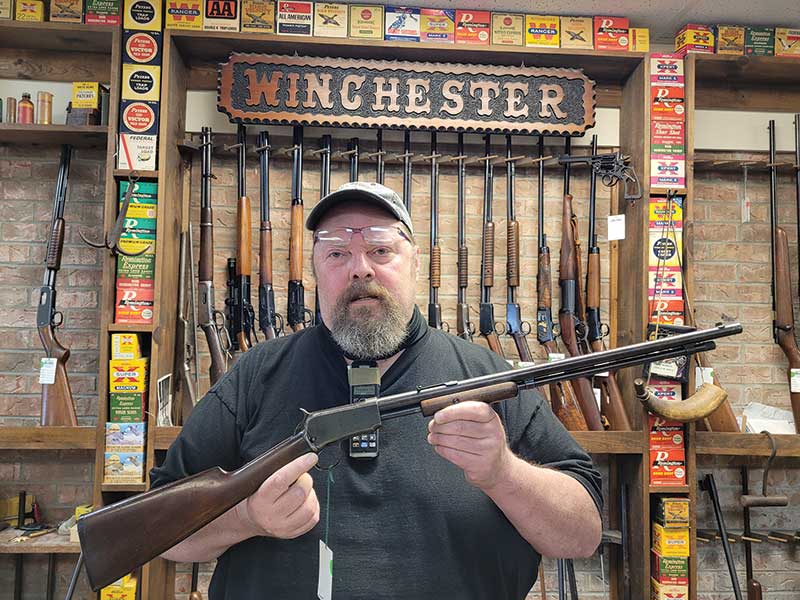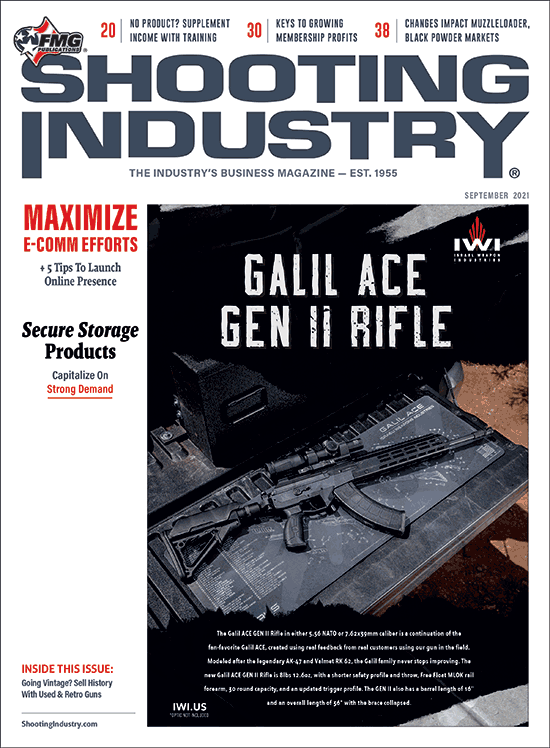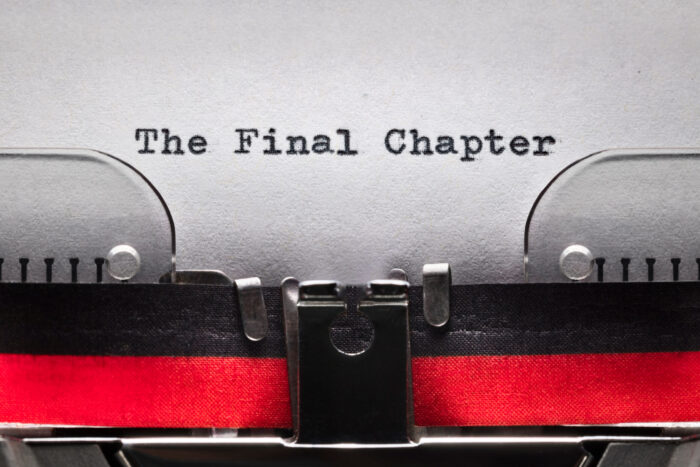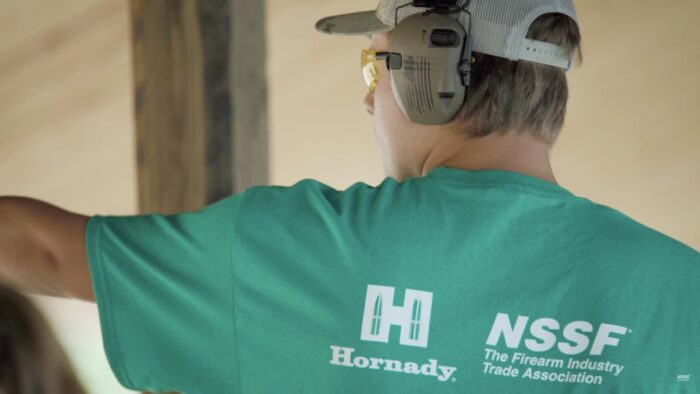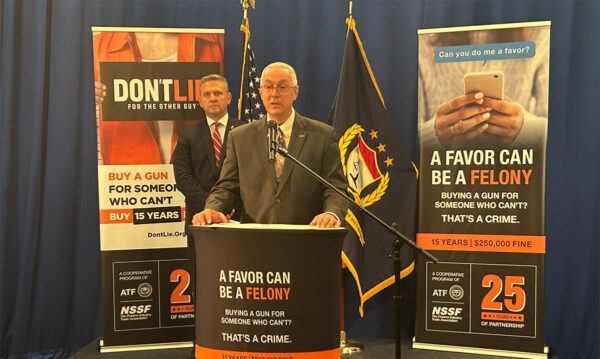Going Vintage?
Take a moment and think. When a customer walks into a gun store, what do they gravitate to? For me, unless I’m in search of something specific, I give the cases of pistols and racks of ARs (let’s pretend there are some to be had) a cursory glance and turn my attention to the used-gun section.
In most stores these are relatively small. This spring, while on a turkey hunting trip in Nebraska, I walked into a Scheel’s for the first time. The vast selection and diversity of items from new firearms to hunting, clothing, and more impressed me; the used-gun section did not. Only one of the two marked racks was half-full. After all, everyone’s buying guns, not selling them. Even so, I could tell pre-owned firearms were not a big-ticket item for them. The two measly half-moon racks relegated to a back wall paled in comparison to large billboard displays and lighted glass cases.
A Specialist
James Davis, founder and owner of Northfield Gun & Tackle of Northfield, Ohio, specializes in collectible firearms.
“I actually started out selling mostly fishing equipment with a few guns,” he said. “I went with the old guns only because I have interest in history and stuff like that, it’s just the way I went. Should I have gone new guns? Yeah … probably. But the problem with new people getting into the old guns is it takes a lifetime of knowledge to know what you’re even looking at.”
For example, Davis noted there are certain things a discerning dealer must look for if a customer comes in to sell a prospective collectible gun, and it’s nearly impossible to know everything.
“On one certain Smith and Wesson, the .357 Model 19 and Model 66, they develop a little crack in the barrel … if a Civil War gun comes in you’ve got to know immediately how much to pay for it.”
Over the course of 33 years, Davis’ business has grown largely through word of mouth and because there are not many dealers specializing in antique firearms. It’s that way for a reason.
Are Used Guns Wanted?
“If a new buyer wants a gun for defense, they never come in looking for a used one. They want brand new because they don’t understand how it works. The older the gun, the better it’s made, there’s just no way to get around that,” Davis said.
Many of 2020’s 8+ million new gun owners fall into this category, and there’s nothing wrong with that. New guns, if obtainable, are performing incredibly well. Used and collectible firearms attract more experienced and knowledgeable buyers.
There’s a difference between used and pre-owned firearms and collectible guns. Many pre-owned firearms available for purchase are modern. According to Davis, anything from the 1980s to present is a modern gun. A year ago, Davis had 200 pre-owned modern handguns for sale, today he has one or two. The pandemic sent demand for nearly any firearms soaring. This incident proves used firearms do have value, but are not likely to be purchased by first-time buyers.
“Retro” Lives On
Vintage or “retro” is certainly not dead. It’s just about finding the right buyer. While Davis specializes in authentic historical arms, Brownells has revived old designs with new production parts.
Roy Hill, Brownells’ public relations specialist, noted a “retro” movement spanned multiple industries just a few years ago.
“People who are old enough to remember the 1970s and ’80s represent a large potential customer base, and they showed an interest and willingness to buy nostalgic products,” he said.
Note the distinction with Davis’ timeline. While Davis’ inventory comes from 1900–1950, Brownells’ reproductions span from 1955 to 1982. The latter approach capitalizes on those customers who experienced or knew of the original, but want a modern twist. Brownells also recognized while there is a market for nostalgia, it isn’t huge.
“For some models, there remains high interest, enough for them to come back as complete guns. For other models, there is enough interest for Brownells to continue to offer the key parts required for a customer to build his or her own,” Hill said.
Brownells’ retail store staff has the opportunity to observe firsthand. Per quarter, the Grinnell, Iowa-based store sells approximately 1,000 new and 300 used firearms.
“Almost all used guns come from customers wanting to trade to something new or a completely different type of firearm platform,” reported the retail store manager. (I also recall a conversation with the owner of Summit Armory in Richfield, Ohio. Many of their used firearms were actually originally purchased new from their store. The original buyer either just didn’t shoot the firearm or did so infrequently.)
Take What You Can Get
General consensus indicates you take what you can get. Used firearms do have a market, especially modern ones. Carrying collectible items gets trickier, but online options like GunBroker have made it easier to find buyers for both collectible and used firearms by broadening the potential customer base. There are buyers out there, you just have to find them.
Many people buy used cars, it only stands to reason they’ll buy used firearms as well. (Personally, I gravitate toward the used firearms section because it’s a place I may find something I’m not expecting.)
The right buyer will pay more for a firearm they cannot get anywhere else. This may be a true vintage firearm, special edition or something no longer manufactured.
While the days of potential “steals” for customers have largely vanished due to available internet resources, the pre-owned firearm section is still a place to find good guns at lower prices than off the shelf. Keep in mind customers are expecting a lower price than MSRP. The right buyer will, however, pay more for a firearm they cannot get anywhere else. This may be a true vintage firearm, special edition or something no longer manufactured.
Davis noted many modern firearms came to him through purchases of collections. He previously invested considerable energy into combing estate sales. Now, with more than enough inventory and a reputation as one of the only antique-gun stores around, he buys collections when people come to him, though this has been on the decline. He explained over the years many of the collectible guns came in when their owners passed away and those have long worked their way into collections or museums and are unlikely to come back around. Most firearms coming in now are from the 1980s, which he doesn’t consider collectible yet.
Selling History
Talk with customers. Any interest in history suggests you may be able to get them to appreciate older collectible guns, if they don’t already. Davis also advises gun-shop owners to become known for something, whether it’s good prices or great service. He’s known for selling history.
“Some of the guns I have were made before electricity. They ’re just beautiful! They used candlelight and light from a window to make these guns. They were craftsmen, they had big leather aprons and hands of steel, that’s how they built these guns. Today they push buttons, and it’s made out of plastic,” he noted.
Military surplus is of special interest. Brownells recognized this when choosing which rifles to reproduce for their Retro Rifles series. The Civilian Marksmanship Program (CMP) is well known for selling Garands and more recently 1911s. Vintage games or matches hosted by the CMP give customers a reason to buy and an opportunity to use their firearm.
In short, there are buyers for pre-owned and vintage firearms, they just might take longer to find.
Dealers, what niche has excelled in your store? We want to hear from you! comments@shootingindustry.com

